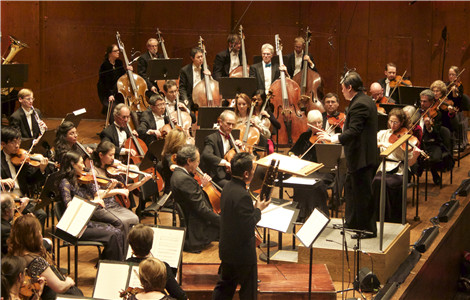Maldives' tourism industry faces challenges as Chinese tourists decline
Updated: 2015-02-26 14:36
(Xinhua)
|
||||||||
Maldives's crucial tourism industry is facing challenging times as it grapples with declining Chinese tourist arrivals, the island nation's main source of tourism revenues.
Tourist arrivals to the Maldives declined by 7.8 percent in January compared to the same period last year, according to the Ministry of Tourism.
Arrivals stood at 97,073 visitors in the month, down from 105, 296 in January 2014, according to monthly statistics from the ministry.
"This was the fourth consecutive month where a negative growth was recorded in tourist arrivals to the country," the ministry said.
Consequently, hotel occupancy rate fell from 82.5 percent in January 2014 to 73.9 percent last month.
"However, the average duration of stay remained uniform at the January 2014 level of 6.5 days. This showed an increase from 6.1 days at the end of December 2014," the ministry noted.
Tourist arrivals also registered negative growth in November (- 5.1 percent) and December (-1.2 percent) last year on the back of a steep decline in arrivals from Russia and Western Europe as well as from Asia and Pacific countries.
Last month, industry insiders expressed concern that the Maldives could become an overpriced destination with the introduction of new taxes.
While the Tourism Goods and Services Tax was hiked from 8 to 12 percent in November 2014, the government announced that a 6-U.S.- dollar-per day "green tax" would be imposed on tourists from November 2015.
"The green tax will definitely have an impact. It is becoming too expensive to go to the top resorts because of all the service charges and taxes," Shafraz Fazley, managing director of Viluxur Holidays, told travel website TTG Asia.
In a phenomenon that caught many industry experts by surprise, the number of Chinese tourists visiting the Maldives tripled from about 100,000 in 2010 to more than 300,000 last year.
In 2014, Chinese tourists accounted for nearly one-third of arrivals with a 30-percent market share, representing the single biggest source market for tourists to the island nation.
A total of 363,626 Chinese tourists visited the Maldives in 2014, up 9.6 percent from the previous year.
However, the annual growth rate of Chinese tourist arrivals slowed from 20 percent at the end of June to 9 percent by the end of December last year.
"Arrivals to the Maldives from China started slowing down during mid-2014 and negative growths were registered since August that year," the Tourism Ministry said.
"January 2015 was recorded as the worst month in terms of Chinese tourist arrivals in the Maldives with a strong negative growth of 33.1 percent. China being the number one market to the Maldives, the negative growth registered from the market was reflected in the total arrivals to the country," the ministry said.
Meanwhile, according to the ministry's visitor survey for 2014, less than 10 percent of Chinese tourists were repeat visitors.
In contrast, the survey found more than 25 percent of British, Italian and German tourists visited the Maldives between two to 10 times.
With the decline in arrivals from China, Europe has regained top spot as the largest regional source market for tourists, increasing its market share from 43.9 percent at the end of December to 54.1 percent in January.
A total of 52,545 visitors were recorded from European countries, representing a marginal growth of 0.5 percent compared to January 2014.
However, with Chinese arrivals representing more than a quarter of visitors, total arrivals reached the government's target of 1.2 million visitors last year.
In terms of individual markets in January 2015, Italy was the second largest source market with an 8.3-percent market share, followed by the United Kingdom with 7.4 percent, Germany with 7.3 percent and Russia with 6 percent.
As interest in Maldives declines in China and the competition ramps up, the Indian Ocean islands will have to adopt measures to lure repeat visitors as much as new tourists, experts said.

 Chengdu citizens visit Du Fu Thatched Cottage to mark Human Day
Chengdu citizens visit Du Fu Thatched Cottage to mark Human Day
 Tencent gifts red envelopes to employees
Tencent gifts red envelopes to employees Throwing coins to please God of Wealth
Throwing coins to please God of Wealth
 7 companies that aim to fly high with drone deliveries
7 companies that aim to fly high with drone deliveries
 Starry Night created by lens
Starry Night created by lens
 Dragons, martial arts and basketball
Dragons, martial arts and basketball
 Stringing in the New Year
Stringing in the New Year
 Top 10 Chinese innovators in 2014
Top 10 Chinese innovators in 2014
Most Viewed
Editor's Picks

|

|

|

|

|

|
Today's Top News
China, US work to make Xi's visit successful
Challenges loom as meetings approach
Chinese smartphone company seeks more gains in US
Obama blames immigration woes on Republicans
New fighter jet ready for PLA
Why China's youth is getting the needle
Most Chinese forced to return home were living abroad illegally
US State Dept calls for cyber security boost
US Weekly

|

|







